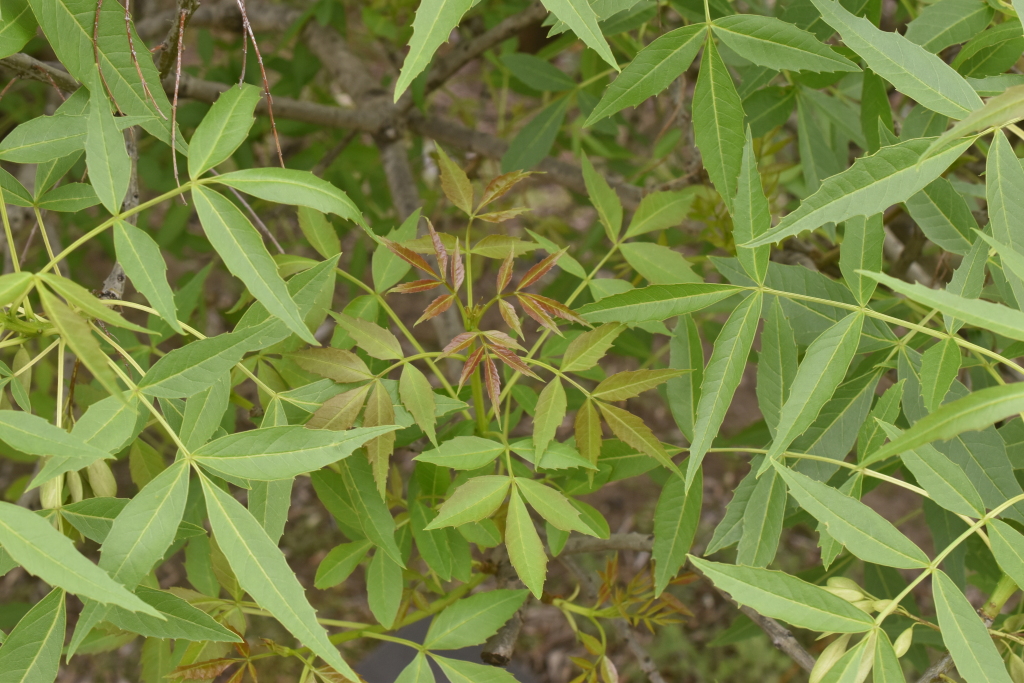Fraxinus angustifolia subsp. angustifolia
Desert AshTree to c. 20 m or more high, deciduous, with dark brown winter buds. Leaves mostly 14–20 cm long; leaflets 5–13 (usually 5–7), narrow-lanceolate to elliptic, mostly 5–8 cm long and 0.7–2 cm wide, apex acuminate, base cuneate, margins serrate, glabrous. Panicles axillary, many-flowered, appearing before the leaves; sepals and corolla absent. Samara elliptic, 3–4 cm long, slightly twisted, winged in upper half. Flowers spring.
Wim, GleP, VVP, VRiv, MuF, GipP, OtP, Gold, CVU, DunT, HSF, HNF, VAlp. Also naturalised in WA, SA, Qld, NSW, ACT, Tas. Native to the Mediterranean region and south-western Asia. A popular street or garden tree that has been noted as naturalised at a few sites near Melbourne and near Euroa.
Claret Ash (Fraxinus angustifolia subsp. oxycarpa (Willd.) Franco & Rocha Afonso 'Raywood') is commonly grown for its spectacular purplish autumn foliage, but naturalised plants belong to the nominate subspecies with yellowish autumn leaves.
Jeanes, J.A. (1999). Oleaceae. In: Walsh, N.G.; Entwisle, T.J., Flora of Victoria Vol. 4, Cornaceae to Asteraceae, pp. 477–483. Inkata Press, Melbourne.
 Spinning
Spinning

